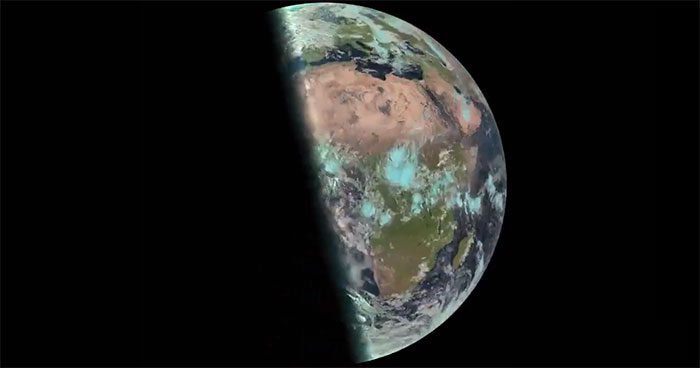Simon Proud, a scientist at the Earth Observation Centre in the UK, shared a video depicting the twilight zone (the dividing line between day and night) as it moves throughout the year.
This video is compiled from images captured by the Meteosat weather satellite. (Video: Space)
The video utilizes data from the Meteosat weather satellite to illustrate how sunlight shifts across the Earth’s surface throughout the year. This is the result of combining 365 images, all taken at 6 AM each day over the past year, as reported by Space on June 21.
In the video, one can observe how changes on Earth throughout the year cause days to lengthen or shorten from north to south as the planet orbits the Sun. The Northern Hemisphere experiences its longest day of the year during the summer solstice at 10:57 PM on June 21, according to Hanoi time.
The summer solstice is the moment when the Northern Hemisphere is tilted most towards the Sun, receiving the maximum amount of sunlight during the day. This means it is the longest day for the half of the globe north of the equator, where summer reaches its peak. However, while the Northern Hemisphere is basking in sunlight, the Southern Hemisphere is experiencing its darkest day of winter. After the summer solstice, days in the Southern Hemisphere will begin to lengthen while those in the Northern Hemisphere will shorten.

The Northern Hemisphere experiences its longest day of the year during the summer solstice at 10:57 PM on June 21.
In reality, the Sun does not actually move across the sky — the apparent movement of the Sun is a result of the Earth’s rotation around its tilted axis. The arc of the Sun’s movement changes daily, growing larger in the Northern Hemisphere from the winter solstice in December to the summer solstice in June, and vice versa.
The Meteosat weather satellite from Europe observes the Earth from a geostationary orbit at an altitude of 36,000 km. Currently, the Earth is gradually approaching the autumn equinox in September, marking the time when both hemispheres receive equal amounts of sunlight.




















































